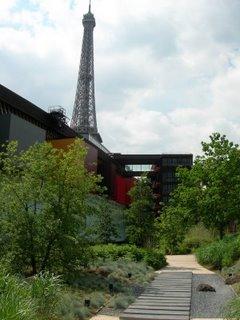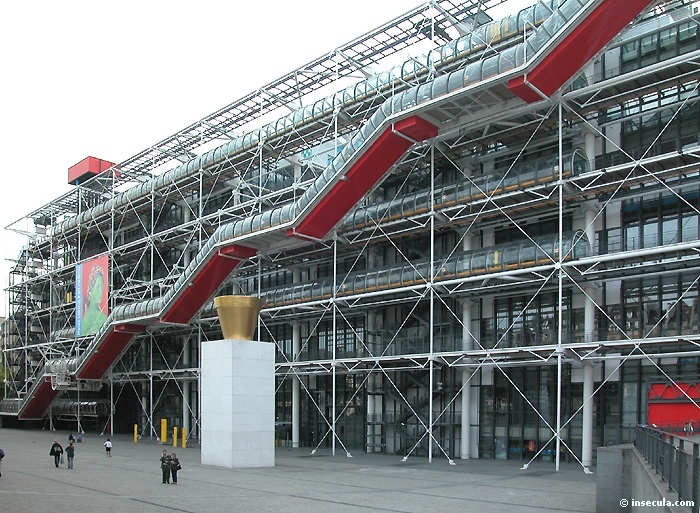Culture
Sightseeing in Paris is like plunging into ancient history: remains of the old Roman Lutetia, grand medieval abbeys, gothic masterpieces, classical architecture, collections from Napoleonic times, perspectives defined by Haussmann… A remarkable density of artistic and cultural treasures to choose from at each visit! 180 museums and monuments for your enjoyment: discover internationally-renowned collections of paintings, sculpture and decorative arts, go in search of iconic emblems, symbols of the influence of an era, take inspiration from a wealth of contemporary heritage – all this makes Paris a capital of the arts, both past and present. (more information).
Musée du Louvre
 Formerly the residence of the Kings of France, the Louvre is one of the French capital’s most renowned sites. With its rich past and collections, it is one of the world’s greatest museums.
The best known of the Louvre’s extensive art collection is undoubtedly its most oft-visited and famous painting, Leonardo da Vinci’s Mona Lisa, located in the Renaissance Italian Paintings section.
The Winged Victory of Samothrace, the celebrated headless statue with outspread wings, and the Venus de Milo are two of the most frequently viewed Greek statues, while the Seated Scribe is one of the most emblematic pieces in the Egyptian Antiquities section.
Formerly the residence of the Kings of France, the Louvre is one of the French capital’s most renowned sites. With its rich past and collections, it is one of the world’s greatest museums.
The best known of the Louvre’s extensive art collection is undoubtedly its most oft-visited and famous painting, Leonardo da Vinci’s Mona Lisa, located in the Renaissance Italian Paintings section.
The Winged Victory of Samothrace, the celebrated headless statue with outspread wings, and the Venus de Milo are two of the most frequently viewed Greek statues, while the Seated Scribe is one of the most emblematic pieces in the Egyptian Antiquities section.
(more information).
Musée du Quai Branly
 An unpartitioned geographical itinerary comprising 5,450 artefacts from all four corners of the world.
At the end of the ‘ramp’, the long winding walkway that spirals up from the reception hall, the permanent collections area presents the great geographical regions in which the Musée du quai Branly’s remarkable collections originated: Oceania, Asia, Africa and the Americas. The visitor makes his way fluidly across them, taking in the major crossroads between civilisations and cultures: Asia-Oceania, Insulindia, and Mashreck-Maghreb.
The 3,500 artefacts are presented so as to highlight the historical depth of the cultures that produced them, and the many different meanings that the works themselves possess. The museography encourages the visitor to take the time to inform himself on major thematic areas: masks and tapa in Oceania, costume in Asia, and African musical instruments and textiles form the subjects of a series of fascinating video presentations.
(more information).
An unpartitioned geographical itinerary comprising 5,450 artefacts from all four corners of the world.
At the end of the ‘ramp’, the long winding walkway that spirals up from the reception hall, the permanent collections area presents the great geographical regions in which the Musée du quai Branly’s remarkable collections originated: Oceania, Asia, Africa and the Americas. The visitor makes his way fluidly across them, taking in the major crossroads between civilisations and cultures: Asia-Oceania, Insulindia, and Mashreck-Maghreb.
The 3,500 artefacts are presented so as to highlight the historical depth of the cultures that produced them, and the many different meanings that the works themselves possess. The museography encourages the visitor to take the time to inform himself on major thematic areas: masks and tapa in Oceania, costume in Asia, and African musical instruments and textiles form the subjects of a series of fascinating video presentations.
(more information).
Centre Georges Pompidou - Beaubourg

The Centre national d'art et de culture Georges Pompidou was the brainchild of President Georges Pompidou who wanted to create an original cultural institution in the heart of Paris completely focused on modern and contemporary creation, where the visual arts would rub shoulders with theatre, music, cinema, literature and the spoken word. Housed in the centre of Paris in a building designed by Renzo Piano and Richard Rogers, whose architecture symbolises the spirit of the 20th century, the Centre Pompidou first opened its doors to the public in 1977. After renovation work from 1997 to December 1999, it opened to the public again on 1 January 2000, with expanded museum space and enhanced reception areas. Since then it has once again become one of the most visited attractions in France. Some 6 million people pass through the Centre Pompidou's doors each year, a total of over 190 million visitors in its 30 years of existence. (more information).
